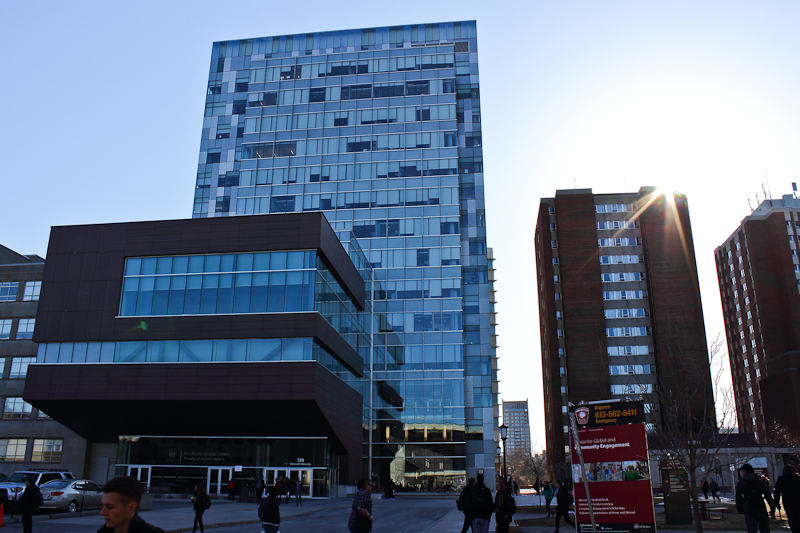The University of Ottawa (U of O) recently unveiled its master plan, which outlines how the school plans to develop and improve its campus over the next 20 years.
The goal of the master plan is to improve the quality of life for students and faculty on campus, according to the website for the master plan.
U of O’s campus is set to become pedestrian-friendly, more connected to the Rideau River, and more green.
Development company Urban Strategies will help plan the campus changes, according to the plan.
Lead urban designer Eric Turcotte said the development will help organize pedestrian and vehicle traffic on the university campus.
He said U of O consists of many streets, but it is often difficult to tell which roads are for vehicles or pedestrians.
“What we’re trying to do is rationalize the movement, in terms of where should cars be, where should cyclists be, where should pedestrians be,” he said.
Turcotte said the university plans to make its campus more safe and accessible for pedestrians.
In order to do this, most of the campus interior will be vehicle-free and an area at the edge of campus will be designated for vehicles.
“We will basically put the cars on the edge of the campus, so that the interior of the main campus is . . . dedicated to pedestrians,” he said.
The addition of several bike paths will connect the campus to the Rideau River, according to the plan.
“Ultimately that connection there is what needs to be made, as smooth, safe, and generous as possible,” Turcotte said.
The plan also looks to improve campus by adding more greenery and trees to “create an attractive and healthy campus,” he said.
U of O student Nicole Mallory said she thinks a greener campus would make the school look more appealing.
“There’s just a lack of large green spaces. I notice that they’re planning on putting a lot of trees and greenery in front of the new Faculty of Social Sciences (FSS) building, so I think that’s an awesome idea,” Mallory said. “But in terms of improving student health, I don’t think it will have an effect on that.”
Mallory said she thinks the addition of greenery will also reduce parking spaces on campus, especially in front of the FSS building.
“Having cars there isn’t really bothering anyone right now,” she said.
Turcotte said Urban Strategies has received a lot of positive feedback from students, staff, and administration at the university.
“It was clear that people want to see more green, more trees, and more parks on the campus. So our plan gives a lot of priority to that,” he said.
Turcotte added a new public space in the heart of the campus will be built this fall.
“That’s one project that everyone is quite excited about,” he said.
The plan outlines several more changes to the campus over the next 20 years, including the completion of the light rail transit (LRT) line. It would demolish several older buildings, replacing them with new ones, and the redevelopment of King Edward Avenue for housing and academic space.






